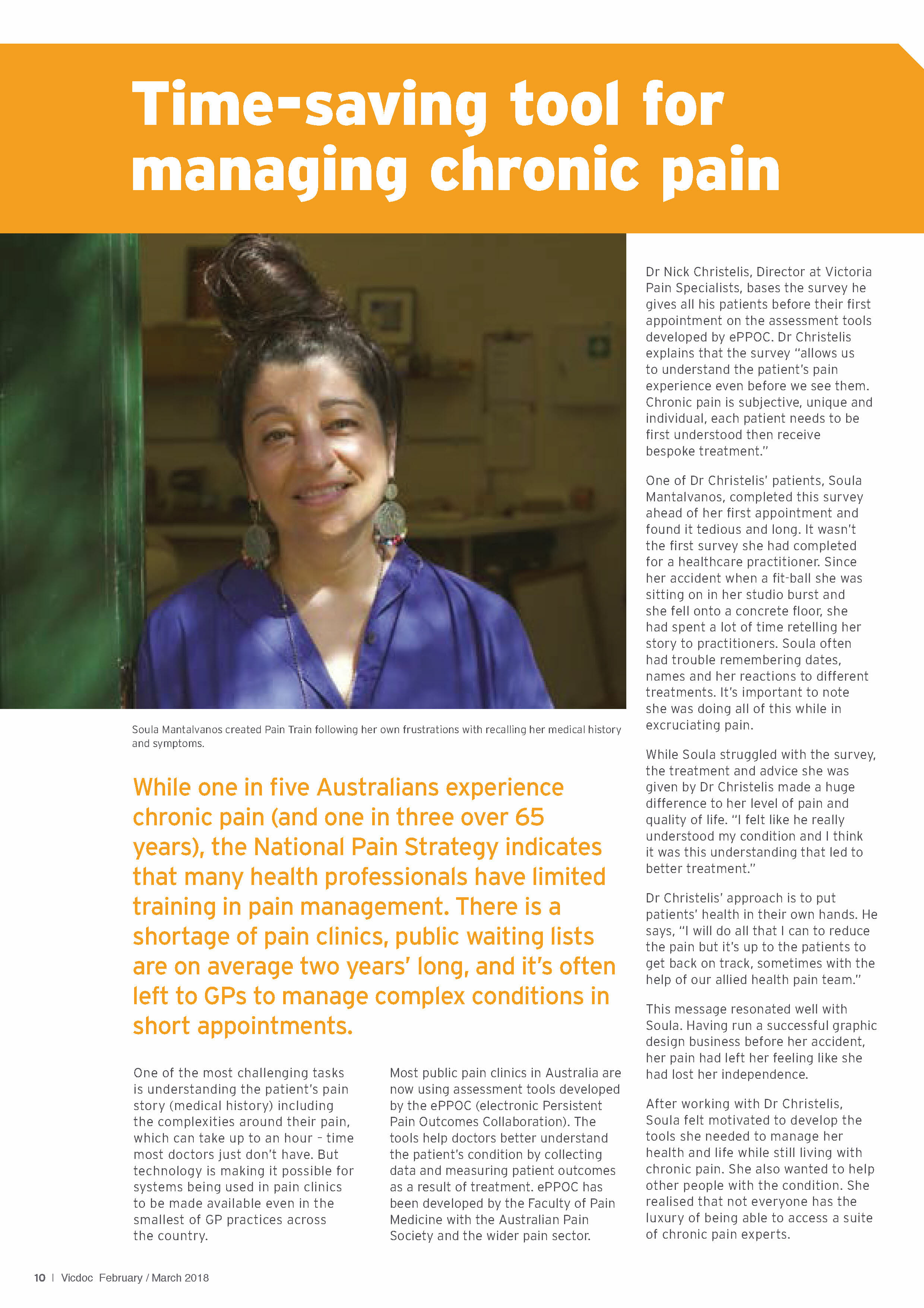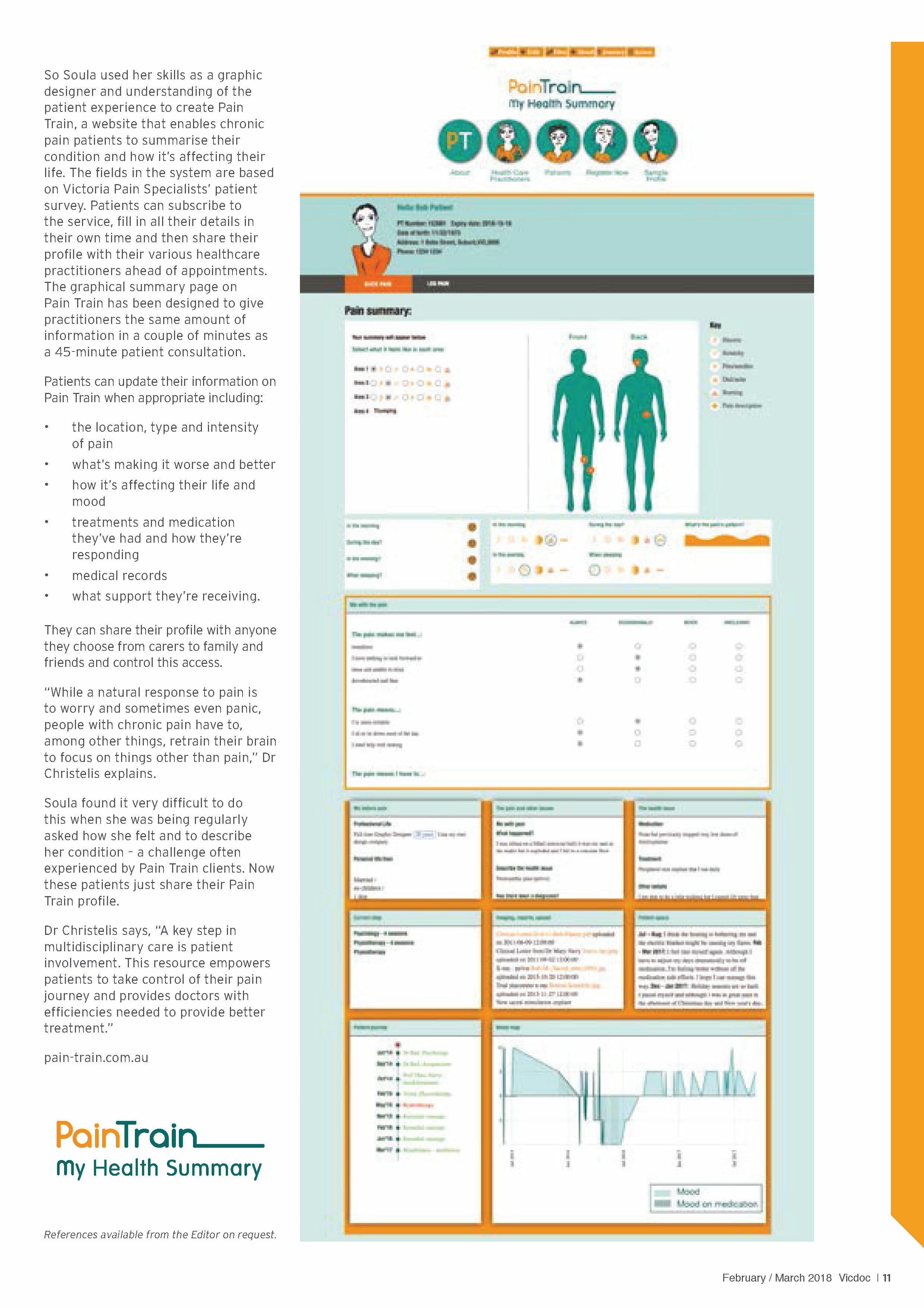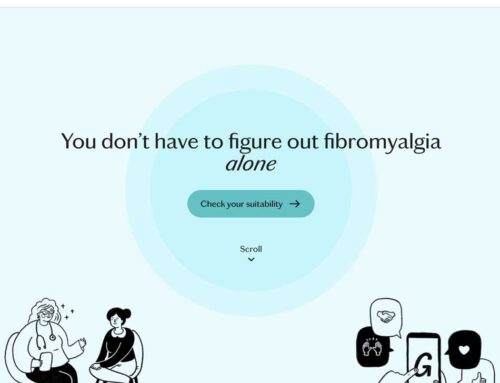Pain management has come to me in various forms.
It’s a pretty special feeling that my 11 years of experience with chronic pain may be useful for learning and inspiring change in the way pain is managed and the way patients and professionals communicate.
Pain Train is essentially a new language for the health sector. It’s going to take time for everyone to learn it and feel confident to use it. It will take some forward thinkers.
For now, it appears people with pain are (understandably) too tired and perhaps needing to hear their pain management teams would actually be happy to use Pain Train. The pain management teams are thinking it’s upto the patient to be more involved in their pain management (as Dr Christelis states in the article).
I hope this article provides encouragement and confidence that Pain Train can work, and indeed can help the professional and patient communicate more efficiently and more easily in their shared complex chronic pain journey.
If you are a patient interested in introducing Pain Train to your pain management team and need some flyers, please email me and I’ll post them to you.
Article written by Kate James
Time-saving tool for managing chronic pain
A couple of excerpts from the article:
‘While one in five Australians experience chronic pain (and one in three over 65 years), the National Pain Strategy indicates that many health professionals have limited training in pain management. There is a shortage of pain clinics, public waiting lists are on average two years’ long, and it’s often left to GPs to manage complex conditions in short appointments.’
and
“While a natural response to pain is to worry and sometimes even panic, people with chronic pain have to, among other things, retrain their brain to focus on things other than pain,” Dr Christelis explains.
Soula found it very difficult to do this when she was being regularly asked how she felt and to describe her condition – a challenge often experienced by Pain Train clients. Now these patients just share their Pain Train profile.
Hit the images to view the article. Professionals subscribed to VICDOC can read the full article here and anyone interested in Pain Train can hit the button below.













Leave A Comment